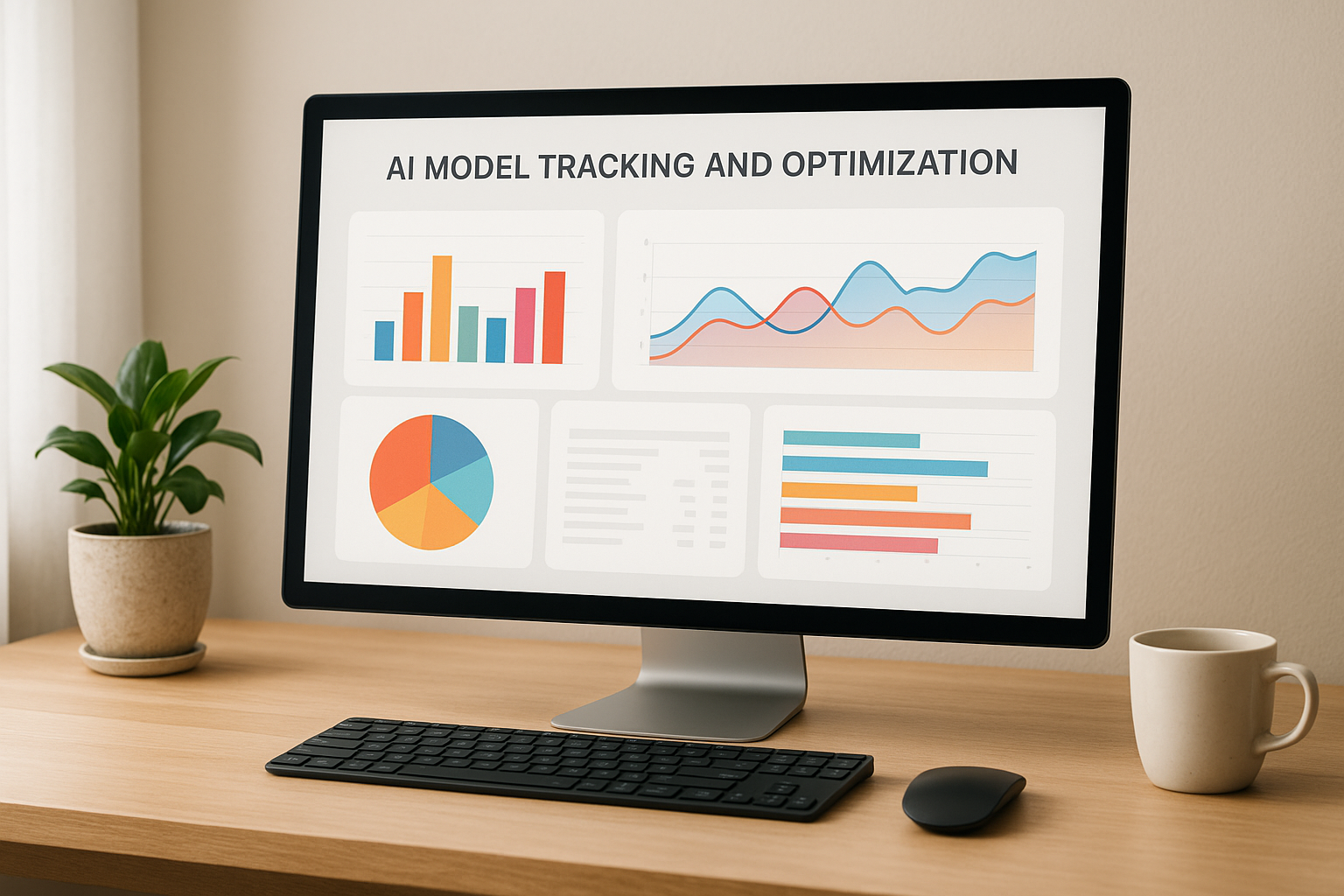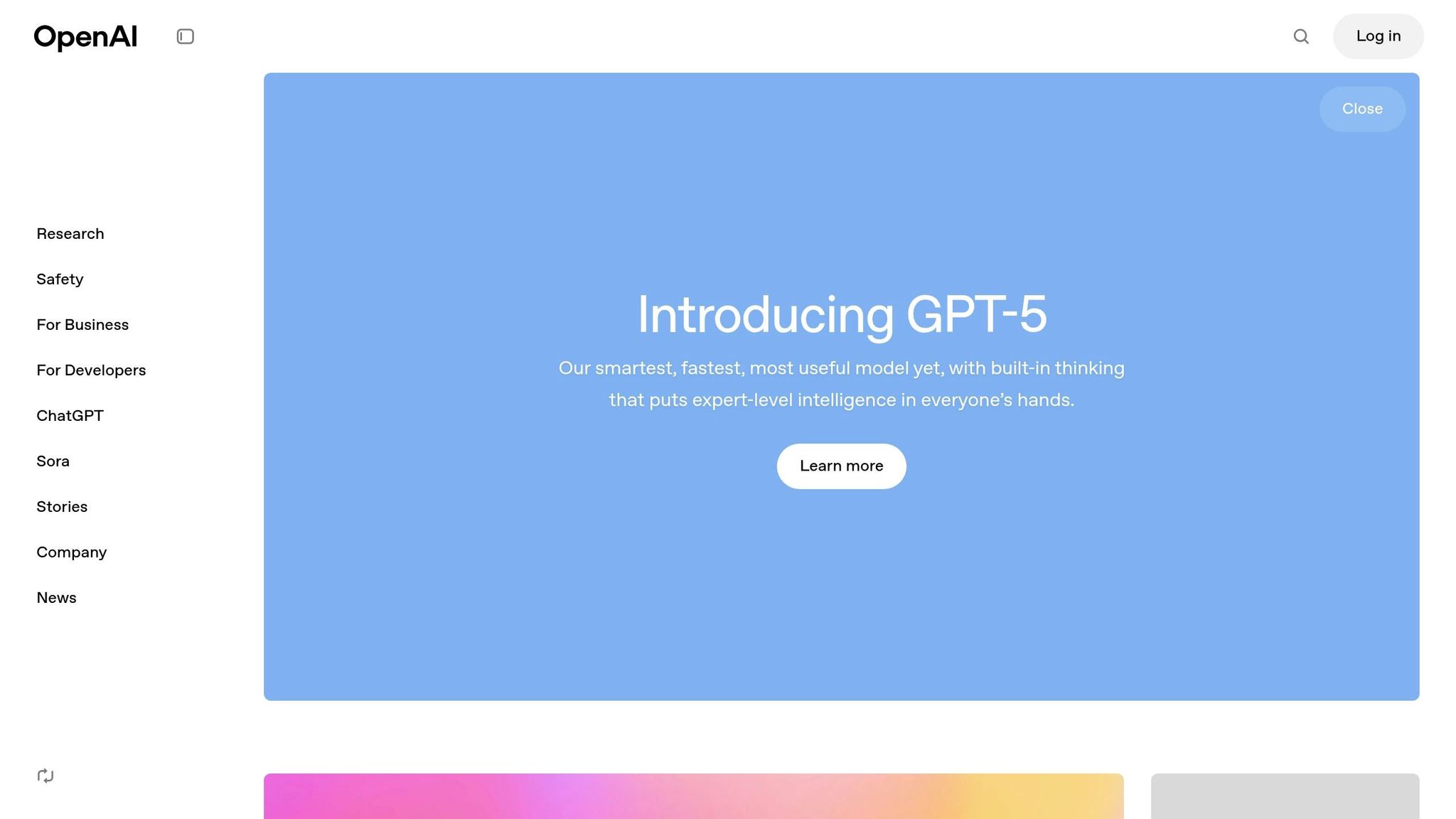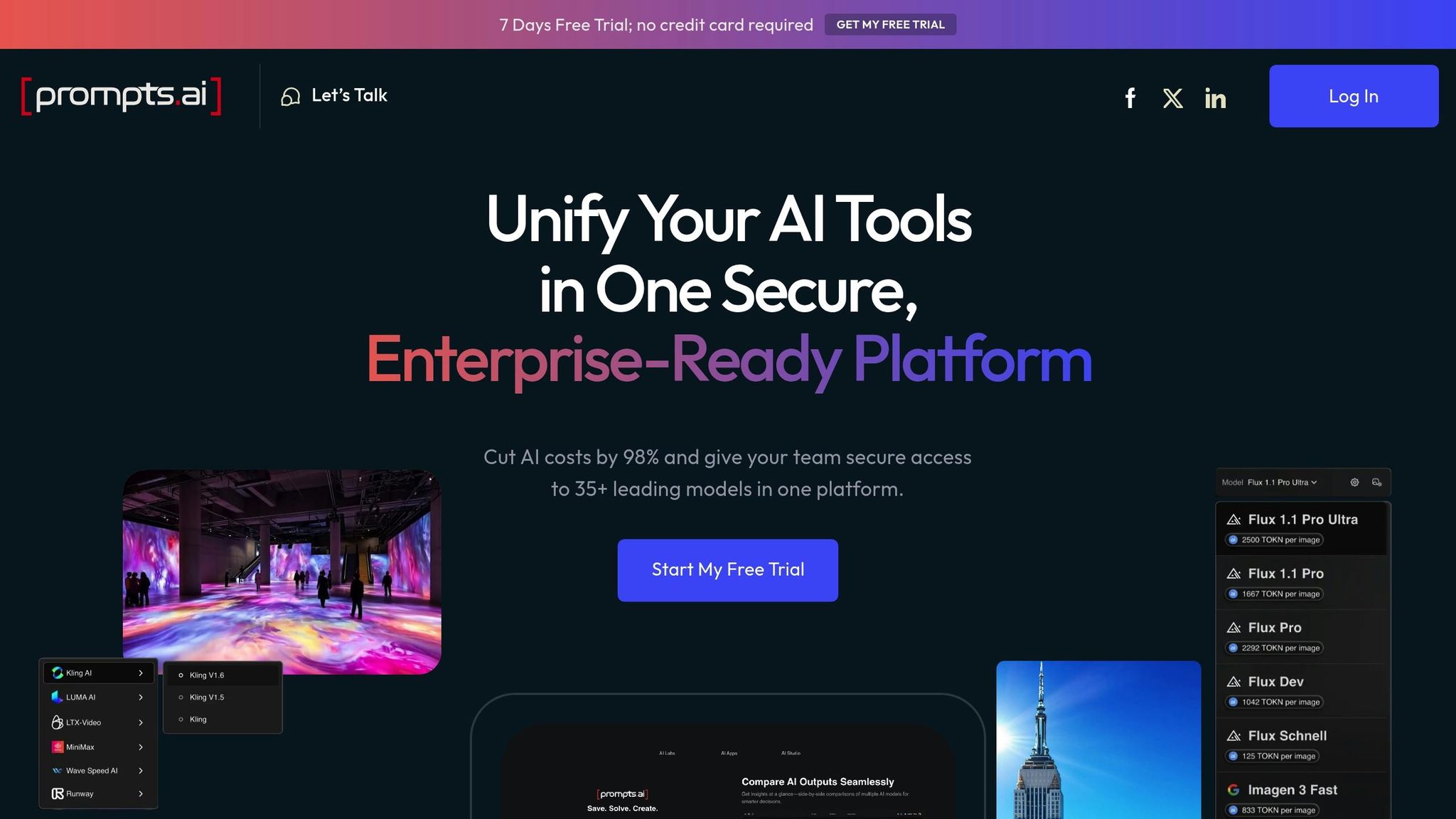
AI models can drive up costs fast without proper tracking. Tools like Prompts.ai give you full visibility into token usage, spending, and performance, helping you cut costs by up to 98%. Here's how these platforms help:
Prompts.ai consolidates over 35 top models into one interface, offering real-time financial controls and enterprise-grade security. Whether you're managing a team or scaling operations, these tools ensure clarity, control, and cost savings.

AI model usage tracking platforms stand out by offering a range of features that go beyond basic monitoring. These tools provide organizations with the visibility, control, and efficiency needed to manage their AI operations effectively.
Precise tracking of tokens is at the heart of effective AI cost management. These platforms record the details of each interaction, such as which prompts triggered requests, the models used, and the associated costs.
Advanced systems offer granular token tracking, breaking down input and output tokens separately. For example, a detailed analytical prompt might use 2,000 input tokens and generate 500 output tokens. This level of detail helps pinpoint the main cost drivers.
Real-time spend monitoring adds another layer of control. Live dashboards display key metrics like burn rates, projected expenses, and alerts when spending approaches predefined limits. With this insight, teams can adjust their usage before costs escalate.
Some platforms also allow spending to be tagged by project, team, or department, enabling accurate chargeback models and better ROI tracking. This tagging ensures that costs are allocated fairly and transparently across an organization.
Understanding individual agent performance is crucial for refining AI operations. Per-agent dashboards provide detailed metrics, such as:
These insights help identify inefficiencies. For instance, if a customer service agent regularly generates 1,500-token responses when only 400 tokens are needed, it signals a clear opportunity for optimization.
Tracking agent activity over time also aids in capacity planning and spotting trends. Teams can identify patterns, such as increased activity during certain hours or seasonal shifts in token usage. Additionally, comparing how agents handle similar tasks can highlight best practices and reveal areas where improvements are needed.
Governance features ensure that AI usage is both secure and compliant. Enterprise-grade platforms maintain detailed audit trails that log who made requests, when they occurred, the prompts submitted, the responses generated, and how those outputs were used.
Role-based access controls provide another layer of security. These controls limit access to high-cost or sensitive models based on specific roles or requirements. For example, expensive multimodal models might be accessible only to senior researchers, while standard text models remain available to all team members.
Data residency and privacy controls are critical for organizations operating in multiple regions with varying regulations. These tools ensure data is processed in the right locations, specify which models can access specific information, and control how long logs are retained.
Budget enforcement mechanisms further enhance compliance by automatically halting operations when spending thresholds are reached. High-cost tasks can only proceed with additional approval, making budget overruns a thing of the past.

Prompts.ai provides a comprehensive platform that seamlessly integrates accurate token tracking with real-time financial management. Tailored for enterprise needs, it consolidates over 35 top language models into a single, secure interface. This streamlined approach not only simplifies AI model management but also enhances cost efficiency and operational control, delivering an all-encompassing solution for businesses aiming to optimize their AI investments.
Prompts.ai brings a level of accuracy to token tracking that meets the high standards of enterprise operations. Its system ensures detailed monitoring of usage, offering clarity and transparency in cost management. The pay-as-you-go TOKN credits system enables businesses to pay strictly for what they use, tying costs directly to outcomes. This approach can slash AI software expenses by up to 98%, ensuring every dollar spent translates into measurable results.
With Prompts.ai, teams gain access to real-time financial operations (FinOps) tools that provide constant oversight of usage and spending. These tools offer up-to-date insights, empowering teams to stay within budget and avoid unexpected expenses. When paired with the platform’s token tracking, these controls deliver actionable insights, aligning AI usage with financial objectives and supporting long-term growth strategies.
Prompts.ai is built to meet the stringent governance and security requirements of enterprise environments. It incorporates strong compliance measures and safeguards sensitive data with secure workflows. By focusing on controlled and compliant operations, the platform ensures that organizations can confidently manage their AI processes while adhering to necessary regulations.
To fully leverage advanced tracking features, it's essential to implement strategies that balance cost management with operational flexibility. By following these practices, organizations can improve cost efficiency while ensuring compliance.
Controlling AI-related expenses starts with clear budget management. A practical strategy involves setting multiple spending thresholds that trigger alerts, allowing teams to respond proactively.
Begin by establishing monthly spending limits at both the organizational and team levels. Set alerts at 75%, 90%, and 95% of the budget to provide timely warnings before reaching the maximum allocation. These tiered alerts give teams enough time to adjust their usage and avoid exceeding limits.
For operations with high activity levels, daily spending caps are highly effective. Many organizations find that allocating 5-7% of the monthly budget as a daily limit helps prevent single-day surges from consuming the entire budget. This approach is particularly useful for teams handling automated workflows or batch processes that can rapidly use tokens.
Incorporating role-based spending limits adds another layer of control. For example, junior team members might have smaller individual budgets, while senior engineers or project managers are allocated higher limits. This ensures spending aligns with responsibility levels and reduces the risk of accidental overuse by less experienced team members.
Once budget controls are in place, regular monitoring through dashboards is crucial for refining these thresholds and improving cost management.
Frequent dashboard reviews provide insights into usage patterns that may not be immediately obvious. Scheduling weekly review sessions allows team leads to analyze trends, address inefficiencies, and identify areas for cost optimization.
Focus on per-agent usage to detect irregularities. Agents consuming more tokens than expected or showing sudden spikes in usage may indicate inefficient prompts, redundant API calls, or the need to switch to less expensive models for specific tasks.
Tracking usage velocity trends over time helps predict future budget needs. For instance, if token consumption increases by 200% in a week, it could signal a process change that requires investigation.
Cross-team comparisons are another valuable tool. Teams performing similar tasks should have comparable token usage. If discrepancies arise, they may highlight inefficiencies or reveal practices that could be shared to improve overall performance.
Documenting these findings and acting on them ensures that insights lead to tangible improvements in both cost control and operational effectiveness. To further enhance compliance, complement dashboard reviews with audit log analysis.
Audit logs play a critical role in meeting regulatory requirements and optimizing usage. Industries like finance and healthcare often mandate detailed records of AI interactions, making comprehensive logging essential.
Implement automated monthly compliance reports to categorize AI usage and flag unusual patterns or potential policy violations. These reports streamline the compliance process, reducing manual effort while maintaining consistent documentation.
Establish data retention policies that balance regulatory needs with storage costs. Retaining logs for 12 to 24 months is generally sufficient to meet most compliance standards.
Regular audit log analysis can also uncover security risks or policy breaches. Look for unusual patterns, such as off-hours usage spikes or attempts to access restricted models, which could indicate potential security issues requiring immediate attention.
Finally, ensure strict access controls for audit logs. Only authorized personnel should have access, and all interactions with the logs should themselves be recorded. This creates a clear accountability chain, satisfying compliance frameworks and safeguarding sensitive information.
Achieving optimal AI model usage requires a well-rounded approach that blends real-time monitoring, careful budgeting, and strict adherence to compliance standards. By closely tracking usage, teams can allocate resources effectively and quickly address inefficiencies that might otherwise go undetected.
Prompts.ai offers a complete solution with its enterprise-grade platform, designed to help organizations get the most out of their AI investments. With tools for detailed tracking and real-time financial controls, teams can keep operations efficient and costs under control.
The platform's per-agent usage dashboards are particularly useful for project managers handling multiple AI workflows. These dashboards provide insights into usage patterns, enabling teams to fine-tune model selection, improve prompt efficiency, and cut unnecessary spending. When paired with automated alerts and tiered budget controls, this level of visibility shifts cost management from a reactive process to a proactive one.
As AI adoption grows, governance and compliance features play an increasingly important role. Automated monthly compliance reports, extensive audit logs, and role-based access controls ensure that teams can innovate confidently while staying within regulatory boundaries. These tools form a critical part of a reliable governance framework, supporting sustainable cost management.
To succeed in optimizing AI model usage, organizations must focus on setting and maintaining budget limits, regularly reviewing usage dashboards, and using audit logs to ensure compliance. This integrated strategy not only helps manage costs effectively but also strengthens operational efficiency and regulatory adherence.
Prompts.ai offers a powerful way to cut AI model costs by as much as 98%, thanks to its smart tools and features. With a pay-as-you-go TOKN credit system, you’re only charged for what you actually use, ensuring cost control. On top of that, the platform’s token-level cost tracking delivers clear, detailed spending insights. By refining prompt design to use fewer tokens while maintaining top-notch model performance, Prompts.ai helps teams balance affordability with efficiency.
Prompts.ai provides essential tools to ensure security and compliance while working with AI models. Key features include real-time monitoring, automated checks to meet compliance requirements, and comprehensive audit trails for tracking usage and upholding regulatory standards.
To safeguard sensitive information, the platform employs data encryption, anonymization, and role-based permissions, restricting access to authorized users only. Secure collaboration tools further enable teams to work seamlessly without risking data integrity. These capabilities help organizations mitigate risks and stay aligned with industry regulations.
Per-agent dashboards offer organizations instant visibility into the performance of individual AI agents. By monitoring key metrics such as resource consumption, efficiency levels, and performance trends, teams can pinpoint issues, streamline workflows, and make informed decisions to enhance overall operations.
These dashboards also track essential indicators like resolution rates, sentiment analysis, and token usage. This allows teams to manage budgets effectively and get the most out of their investments. With a detailed view of usage patterns, businesses can adjust their AI models to run more efficiently and align with their strategic objectives.


